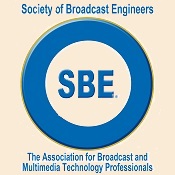
|

CHAPTER 24, Inc., MADISON, WI
|
Our Next Meeting:
Thursday, May 27th
The Next Three Innovations for Networked Audio
by Kirk Harnack of The Tellos Alliance
Over half of all US radio facilities are using Audio over IP. More are converting every day as AoIP technology offers undeniable advantages to all stakeholders.
Broadcast engineers are consistently experiencing the serendipity associated with networked IP audio. They're uncovering new capabilities and applications that were never available - or never convenient - with baseband analog or AES3 audio connections. This presentation exposes the ever-spiraling discovery and development cycle that drives these new capabilities and applications.
AoIP serendipity is creating more convenient workflows, more creative opportunities, and lowering costs of operation for radio broadcasters. It's critical that broadcast engineers are aware of the next innovations for networked audio.
7:00 PM - Meeting/Program
This meeting is Virtual
Connection information will be distributed
in the days just prior to the meeting.
Election Results
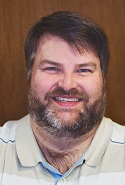 |
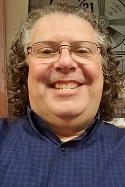 |
| Matt Mommaerts |
Russ Awe |
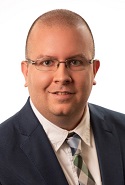 |
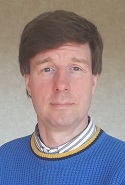 |
| Mike Travis |
Mike Norton |
The results of the 2021 Chapter 24 Officer Elections are in. Matt Mommaerts is elected to his first term as Chapter Chair. Russ Awe is elected to his first term as Chapter Vice Chair. Mike Travis is elected to his first term as Chapter Secretary. Mike Norton is elected to his second term as Chapter Treasurer.
Congratulations to all candidates and thank you for sharing your time and talent to keep our Chapter strong into the future.
Many thanks to Britny Williams who is our outgoing Chapter Chair after serving us for the past two years. Thank you for keeping our Chapter healthy and strong.
Last Meeting's Minutes
Submitted by Russ Awe, Secretary
The SBE Chapter 24 meeting was called to order by Chapter Chair Britny Williams at 7:03pm, April 21, 2021 via Zoom. The meeting had 15 members present with 12 being certified.
The Secretary meeting minutes from 3/25/2021 were moved my Leonard Charles, seconded by Mike Travis and approved as submitted.
Mike Norton as Chapter Treasurer reported that one sustaining membership check was received in April 2021. Following this deposit the Chapter 24 checking account remains steady with a positive balance.
With the eNews letter, Leonard Charles reported that the deadline for articles for the May eNews letter is Friday April 30th at 5pm. Please forward any article of interest to Chapter members to Lcharles@sbe.org .
Britney reported that the latest membership total shows us with 48 members.
Fred Sperry reported that we have one recent renewal with a Sustaining Membership, Alpha Video for a total of 11 Sustaining Members. Thank you to Alpha Video!
For a full list of upcoming SBE Chapter 24 meetings, please visit our web site www.sbe24.org . Discussion was held on when the Chapter might return to in person meetings. We will most likely meet in person for the WBA Clinic in September. It was also suggested that we keep the remote meeting platform so others can join who might not feel as comfortable to attend in person. With most businesses closed to guests, finding locations to meet is also an issue.
Leonard Charles reported this April meeting closes the 2021 voting for Chapter Officers. The nominations committee will now go through the ballot certification process. The results of the election will be published on the web site and in the Chapter's May eNews letter. The new officers will assume their duties at the May Chapter meeting.
Thanks to everyone who cast a ballot in support of the candidates who have volunteered their time to lead the Chapter for the next year.
Thanks also to Kevin Ruppert who serves with Leonard on this year's Nominations Committee.
With certifications, Jim Hermanson reported that the chapter is continuing to certify members.
Last month we congratulated Dennis Baldridge for passing the ATSC 3.0 exam. Jim was also very happy to report that the Chapter has another member that is now ATSC 3.0 certified! Congratulations to Vicki Kipp on passing that exam. Way to go Vicki!!!! Two members of Chapter 24 are the first in the country to pass that exam.
The next exam session is August 6 - 16. To apply for an exam during that time, June11th is the deadline for registering with the national office.
Tom Smith with Frequency Coordination reported that nothing is happening due to COVID.
With the National SBE news, Leonard Charles reported that the SBE Leadership Development Course is set to resume in June. Register to attend now at SBE.ORG.
Upcoming webinars are: Cloud Streaming on April 22 with Kirk Harnack of The Telos Alliance presenting. And, IP Networking, Part 4 with Wayne Pecena on April 29. Register at SBE.ORG.
The SBE wants your help in recruiting new members during the membership drive now through the end of May. You can win rewards for your efforts. Look for details at SBE.ORG.
The Annual SBE Compensation Survey is online now through May 17. You are invited to participate at SBE.ORG. All survey responses are anonymous. Survey results are free to all members and are available in July.
SBE membership renewal time has just passed. The deadline was April 1, so if you haven't done so already, renew now. You are in the grace period of renewal.
Nominations are open now for the SBE Awards Program. You can nominate someone, or a Chapter, at SBE.ORG. Nominations for the SBE Awards Program was discussed.
Under General Announcements, Dennis Baldridge would like to part with some of his Engineering books. Please contact Dennis at info@7db.net, if you would like be the new owner of some great Engineering books. On another note Jim Hermanson's mother was honored on the NBC Today Show by Smucker's and turning 100. Happy Birthday to Jim's mother!
Meeting was adjourned at 7:18pm.
Due to a last minute cancelation of our program, Chapter 24 member Vicki Way Kipp graciously filled in with a fascinating program updating us on "Audio Description for TV". Thank you Vicki! Your presentation was very informative.
Program Ideas Appreciated
The Chapter 24 meeting schedule is available here. Is there a topic you would like to see covered at one of our local Chapter 24 meetings? Or, better yet, is there a topic that you'd like to speak about at an upcoming meeting? Please forward any ideas to Britny Williams or to one of the Chapter 24 officers for consideration. There are many open dates available.
Radio Aircheck Revival
by Vicki Way Kipp
Remember when radio breaks were live, discrepancies were epic, and disk jockeys had to time the intro of each song to figure out how much ramp-up talk to hit the post before the lyrics?
Remember when breaking news from the AP Wire was slowly impact-printed on a dot matrix printer, with the accompanying whir, clink, and "scritch" sounds?
Now, there's an archival website dedicated to old-school airchecks that broadcast on Upper Midwest radio stations. There are airchecks from Madison, Milwaukee, Green Bay/Fox Cities, Central and Northern Wisconsin, and Western Wisconsin.
You can revisit some favorite radio personalities from the 1960s through the early 1990s at the delightfully specific URL MostlyUpperMidwestAirchecks.com.
The website's creator, Mark Pfeifer, says, "The site is a labor of love, and the purpose is to keep memories alive of great and fun radio of the past in the Midwest and elsewhere."
Mark Pfeifer has never worked in broadcasting; he just has an appreciation for radio. Pfeifer grew up in Madison and liked to record radio broadcasts for fun. He continued his recording hobby when he moved to Milwaukee, Philadelphia, Toronto (with radio reception from New York and Ohio), Texas, and St. Paul, Minnesota.
Some of our chapter members were on the radio earlier in their careers or were radio station engineers who collected airchecks. Some of us still use our jock names. Was it a "K" or a "Double-U" station? What was your jock name, call sign, and city of license?
Engineers with airchecks from the 1960s through the early 1990s from the Madison, Milwaukee, and other Wisconsin radio markets can contribute to this Midwest radio museum by sharing your digitized airchecks. The archive is also seeking airchecks from Iowa and Northern Illinois during that era.
Aircheck donors can email an MP3 file (of 20 MB or less) to Torontomail@yahoo.com. Alternatively, you can publish airchecks under ten minutes duration to YouTube and then email that YouTube link to Mark.
If you've been saving airchecks in your home "archive," your donated airchecks can get more plays on MostlyUpperMidwestAirchecks.com.
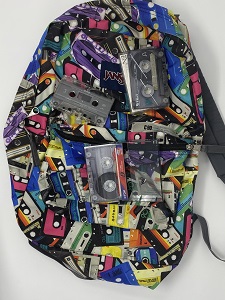
Cassette Tape Charms
Cassette tapes are endearing-- think of mixtapes recorded from a radio station's OTA top ten countdown. But cassettes are more endearing than enduring. Repeated playback, play-pause, and the FF/RW with tape in play mode took a toll.
Radio airchecks were usually recorded on 1/4" reel-to-reel tapes or cassette tapes. At WSUP-FM at UW-Platteville, we recorded airchecks on bulk-erased demo cassettes that record companies sent to radio stations.
Back when cassette tapes were the dominant recording media, the consumer-grade cassette tape market was highly competitive. Maxell and Memorex had the most memorable ad campaigns.
Maxell sold their "high fidelity" cassette tapes by showing a cool guy persona, wearing a leather jacket and black sunglasses, sitting in a Le Corbusier chair getting "blown away" by Maxell's high-fidelity recording of "Flight of the Valkyries." (www.youtube.com/watch?v=Zjf5pdJJ44Q)
Memorex made its mark with a cassette recording of Ella Fitzgerald singing that could shatter a wine glass. "With such crystal-clear fidelity, you'll have to ask, is it Ella or is it MX-3?" (youtu.be/KeeuT3ciqpI)
Memorex's "Is it live or is it Memorex?" ad notwithstanding, it probably wasn't hard to make that call most of the time. The telltale white noise of cassette hiss gives cassette tapes away.
Gray Spins Off 10 Quincy Stations
from Tom Smith
On April 29th Gray TV announced that it was spinning off 10 stations that it bought from Quincy Media to Allen Media Broadcasting for $380 million. The stations are being sold in order to meet FCC ownership limits. Gray already owns stations in these markets and are prohibited from owning two station that are affiliated with the big four networks (ABC, CBS, FOX and NBC). Gray TV bought Quincy Media earlier this year for $925 million. Gray will retain 13 of the Quincy stations.
The stations that Gray is spinning off to Allen Media Broadcasting are:
WKOW Madison, WI
WAOW Wausau, WI
WQOW Eau Claire, WI
WXOW LaCrosse, WI
WMOW Crandon, WI (satellite of WAOW)
WREX Rockford, IL
KWWL Cedar Rapids, IA
WSIL Paducah, KY
KPOD Harrisburg, IL (satellite of WSIL)
KVOA Tucson, AZ
Gray will retain WAOW satellite WYOW Eagle River to use as a satellite for its CBS station in Wausau, WSAW. Gray recently requested a new allocation (DA-21-424A1) for channel 9 for Freeport, IL which is part of the Rockford market. Gray operates low-power TV station WIFR in Freeport. In the incentive action, Gray sold the full power license for WIFR to the FCC $50,060,965. Gray is also asking (DA-21-438A1) for a second channel to be assigned to Eagle River.
Allen Media Broadcasting is owned by Byron Allen, who was a host on NBC's Real People which ran from spring 1979 to summer 1984. He also hosted the Byron Allen Show, Comics Unleashed and Entertainment with Byron Allen. Since then he founded Allen Media Group and Entertainment Studios. Entertainment Studios owns the Weather Channel, Comedy.TV, Recipe TV, Justice Central TV and several other cable networks as well as a number of syndicated programs and is part owner of the Bally (FOX) regional Sports networks. Starting in 2019 he started to buy broadcast TV stations and owned 15 full power stations and 2 low-power stations along with an operating agreement for another TV station. With the purchase of the Quincy stations, he will have spent nearly a billion dollars on purchasing TV stations and has been quoted as willing to spend up to 10 billion dollars on purchasing TV stations which could put him in the same league as Sinclair, Nextstar, Gary and Scripps broadcasting with the number of stations owned.
Information on the transaction can be found on a release by Gray TV with additional information on Byron Allen and Entertainment Studios from the Allen Media Group website and Wikipedia. There are articles on the Quincy spin-off in Broadcasting and Cable, TVnewscheck, and Northpine.com (Upper Midwest Broadcasting) and other broadcast and entertainment news sites.
Amateur Radio News
Compiled by Tom Weeden, WJ9H
RF Exposure Rule
The FCC has announced that rule changes detailed in a lengthy 2019 Report and Order (R&O) governing RF exposure standards go into effect on May 3, 2021. The new rules do not change existing RF exposure (RFE) limits but do require that stations in all services, including amateur radio, be evaluated against existing limits, unless they are exempted. For stations already in place, that evaluation must be completed by May 3, 2023. After May 3 of this year, any new station, or any existing station modified in a way that's likely to change its RFE profile -- such as different antennas or placement, or greater power -- will need to conduct an evaluation by the date of activation or change.
"For most amateurs, the major difference is the removal of the categorical exclusion for amateur radio, which means that ham station owners must determine if they either qualify for an exemption or must perform a routine environmental evaluation," said Greg Lapin, N9GL, Chair of the American Radio Relay League's (ARRL) RF Safety Committee and a member of the FCC Technological Advisory Council (TAC).
ARRL has published a "Frequently Asked Questions" document at http://central.arrl.org/docs/RFX%20FAQ%20V1.3.pdf.
The Lake Washington Ham Club of Kirkland, Washington has an online RF Exposure Calculator at http://www.lakewashingtonhamclub.org/resources/rf-exposure-calculator/.
Volcano
On the 42nd anniversary of the 1979 eruption of the La Soufrière volcano, island residents of St. Vincent were awakened to another column of volcanic ash creating a thick blanket obscuring part of the eastern sky as the volcano erupted violently. According to Donald de Riggs, J88CD, since the eruption began last December, local hams have been in a state of readiness via 2-meter networks and regional networks via HF. A 24-hour regional HF network and vigil has been active since violent eruptions resumed in April to provide communication support should telephone service be disrupted by the volcanic hazard. This includes a twice-daily link-up on HF with the Caribbean Disaster Emergency Management Agency (CDEMA). The La Soufrière volcano on St. Vincent began its most recent series of explosive eruptions on April 9, sending clouds of hot ash some 20,000 feet into the air, blanketing much of the island in ash and causing water and power outages. The volcano is "a constant threat," according to CDEMA.
National Amateur Radio Operators Day
Arizona Congresswoman Debbie Lesko has reintroduced a resolution with bipartisan support to designate April 18, 2022, as National Amateur Radio Operators Day. Introduced on April 19, the measure recognizes the important contributions amateur radio operators have made. She introduced a similar bill in the last Congress.
"Throughout history, amateur radio operators have provided invaluable services to our communities," Lesko said in a news release. "I am proud to reintroduce this resolution to honor the important contributions amateur radio operators have made in Arizona and across our nation. Amateur radio has brought people together and has provided critical emergency communications during natural disasters. Amateur radio is a vital part of our nation's communications infrastructure."
As Lesko's resolution notes, the International Amateur Radio Union (IARU) designates each April 18 as World Amateur Radio Day, to recognize the founding of the IARU in 1925. She said her resolution would recognize the amateur radio community with a national day in the US. Lesko said she was initially approached to introduce the resolution during the last Congress by then-12-year-old Raymond Anderson, N7KCB, of Peoria, Arizona.
(Excerpts from the American Radio Relay League's arrl.org web site)
FCC NEWS
compiled by Tom Smith
FM Auction Rules Issued
On April 1st, the FCC issued rules (DA-21-361A1) for Auction 109 which will start on July 27th. There will be 136 FM construction permits (DA-21-361A2) to be auctioned along with 4 AM construction permits. The 4 AM permits are for 4 AM stations in the St. Louis area which licenses had been revoked and the FCC considered as allocated and not new permits. These notices are standard for all auctions and include the process for conducting the auction, the granting of permits and the method of payment which can differ depending on the service of the spectrum being auctioned.
There are two FM permits be auctioned in Wisconsin. One is a Class A (6kw at 100 Meters) in Crandon with a minimum bid of $1500 and a Class C-3 (25 kw at 100 meters) in Tomahawk with a minimum bid $10,000.
The FCC also issued a freeze (DA-21-381A1) on April 1st on any changes or new allocations for any FM stations that could affect or conflict with any of the purposed allocations that are being auctioned. Applications to participate in the auction opened on April 28th and closes on May 11th.
Applicants Limited In NCE Window
On April 21st, the FCC issued a notice (FCC-21-43A1) adopting a ten application limit in an upcoming non-commercial educational filing window. The FCC previously announced that they were planning on a filing window for new NCE stations. The last filing window was in 2007 when the FCC also limited the number of applications one entity could file to ten applications. NCE stations are not subject to auctions and by limiting the number of applications by one entity, the processing of the applications can be done in a more timely manner with fewer conflicts between applicants. In a separate notice on April 21st (DA-21-463A1) the FCC set the dates for the application filing window from November 2nd to end of business on November 9th.
DTS Rules In Effect
On April 23rd, the FCC announced the revised rules (DA-21-472A1) that they adopted on January 19th for operation of Distributed Transmission Systems for DTV stations. They will go into effect on May 24th after being approved by the Office of Budget and Management on April 16th and published in the Federal Register on April 22nd, making the rules official. The new rules will ease restrictions on coverage from transmitters in a single frequency network on a DTV station's main coverage contour limit and allows Class A and low-power DTV stations to use SFN systems. This rule change will allow DTV stations converting to ATSC 3.0 to take better advantage of SFN systems which is one of the features that will aid ATSC 3.0 in providing improved TV broadcast reception.
CALM Act Questions
The FCC is seeking comment (DA-21-447A1) on the need of updating the Calm Act which requires TV stations and multiple video program distributers to limit the loudness of commercials compared to program content. The FCC is seeking comment from both the industry and from viewers. The notice was released on April 19th with comments due on June 3rd and replies due on July 9th.
New Wireless Mic Rules
The FCC has released a Notice of Proposed Rulemaking (FCC-21-46A1) to allow a new wireless microphone system on existing wireless microphone frequencies and on some new frequency bands. The system the FCC is seeking comment on is from Wireless Multichannel Audio Systems. This is a wireless system that can be used for both wireless microphones and in-the-ear monitoring systems. The system uses the same technology as cell phone systems such as Frequency Division Multiple Access, Time Division Multiple Access and Time Division Duplex Systems. The wireless microphones and in-the-ear monitors operate with a common base station and can operate 12 or more units over a six MHZ channel. The FCC is proposing to allow the units to operate on all of the current bands that wireless microphones now are allowed to operate on except the remote audio pick-up bands in the 26 MHz and 170 MHz VHF bands and the 450 and 455 MHz UHF bands. These bands have very limited bandwidth and are not capable of handling the bandwidth of the WMAS units which can use up to 200 kHz per microphone or in-the-ear units. The WMAS systems are already authorized for use in Europe and the proposed technical standards that the FCC is asking for comments are the same as the standard (tr_103450v010101p.pdf) adopted in Europe.
The notice was adopted and released on April 22nd. There will be a 30 day comment period with a 30 day reply period. The comment period will start with the publication of the notice in the Federal Register.
For the Record
(Wisconsin FCC Actions Granted)
compiled by Leonard Charles
from the FCC Daily Digest
There were no Wisconsin actions in April
|
Certification and Education
compiled by Jim Hermanson
The Open Exam Schedule
| Exam Dates |
Location |
Application Deadline
(to SBE National Office) |
August 6-16, 2021
|
Local Chapters (Madison Area)
|
June 11, 2021
|
November 5-15, 2021
|
Local Chapters (Madison Area)
|
September 10, 2021
|
Each year, account balance permitting, Chapter 24 will reimburse half the application fee to any member of Chapter 24 in good standing who successfully obtains any SBE certification level not previously held by that member. Contact the SBE Chapter 24 chairperson or certification chairperson for more information.
When you are ready to take an SBE exam, note the open exam schedule, complete the appropriate application (found here... http://www.sbe.org/applications) and send it directly to the SBE National office (see address below) with the respective fee. You will be notified once your application is approved. Your local certification chairman will receive a list of applicants and exams in his/her chapter and arrange for a proctor. He/she will then contact applicants to schedule a mutually agreeable date, time, and place for the exam(s) within the respective exam date window. This must be coordinated before the exam will be sent by SBE National. Completed exam(s) will be mailed back to SBE National for grading. Pass/fail results will be mailed directly to the applicants within approximately six weeks.
The majority of SBE certifications are open book and access to the Internet is allowed to give a more "real world" situation.
You may mail, email or fax your applications to:
Megan E. Clappe
Certification Director
9102 N. Meridian St.
Suite 150
Indianapolis, IN 46260
317-846-9120 Fax
mclappe@sbe.org
|
To apply for a specialist certification, an individual must currently hold certification on the Broadcast Engineer, Senior Broadcast Engineer, Professional Broadcast Engineer or Broadcast Networking Engineer Certification level. Exams must be completed within three hours and consist of 50 multiple-choice questions (two points each) and one essay question (20 points maximum). Examinees are provided one essay question to answer. Exams are pass/fail, and a score of 84 is a passing grade.
SBE Technical Professional Training Program
Training new entrants to the field of broadcast technology
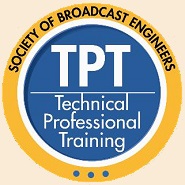 To address the ongoing concern about new technical talent choosing broadcasting as a career, the SBE created the Technical Professional Training Program (TPTP). As technology and the average age and tenure of technical professionals advances (as shown in the annual SBE Compensation Survey), there is concern to adequately fulfill the technical staffing needs in the long term.
To address the ongoing concern about new technical talent choosing broadcasting as a career, the SBE created the Technical Professional Training Program (TPTP). As technology and the average age and tenure of technical professionals advances (as shown in the annual SBE Compensation Survey), there is concern to adequately fulfill the technical staffing needs in the long term.
Drawing on existing SBE programs, the society has assembled a valuable service to the broadcast industry going forward. The goal: Training new entrants to the field of broadcast technology. There are four elements that combine to create the new Technical Professional Training Program.
• The extensive Webinars by SBE collection developed and cataloged for on-demand use of SBE members is regularly expanded and updated to reflect the latest developments in the industry. The advent of SBE MemberPlus provides access to the library for a fixed annual fee.
• The SBE Broadcast Engineering Handbook is a hard-copy reference volume for hands-on use in designing and maintaining technical facilities.
• The SBE Mentor Program provides new entrants to the technical broadcast field regular access and guidance from a seasoned professional - a personal touch not unlike days of old when the senior staff would take the new person under a wing to show him or her the ropes.
• The SBE Certification Program entry-level certification (Certified Broadcast Technologist) demonstrates a comprehension of regulatory and technical requirements of station operation.
• The SBE CertPreview for this certification level can be utilized by a mentor to curate the preparation experience of a mentee utilizing the Webinars by SBE library supplemented with the mentor's knowledge and experience.
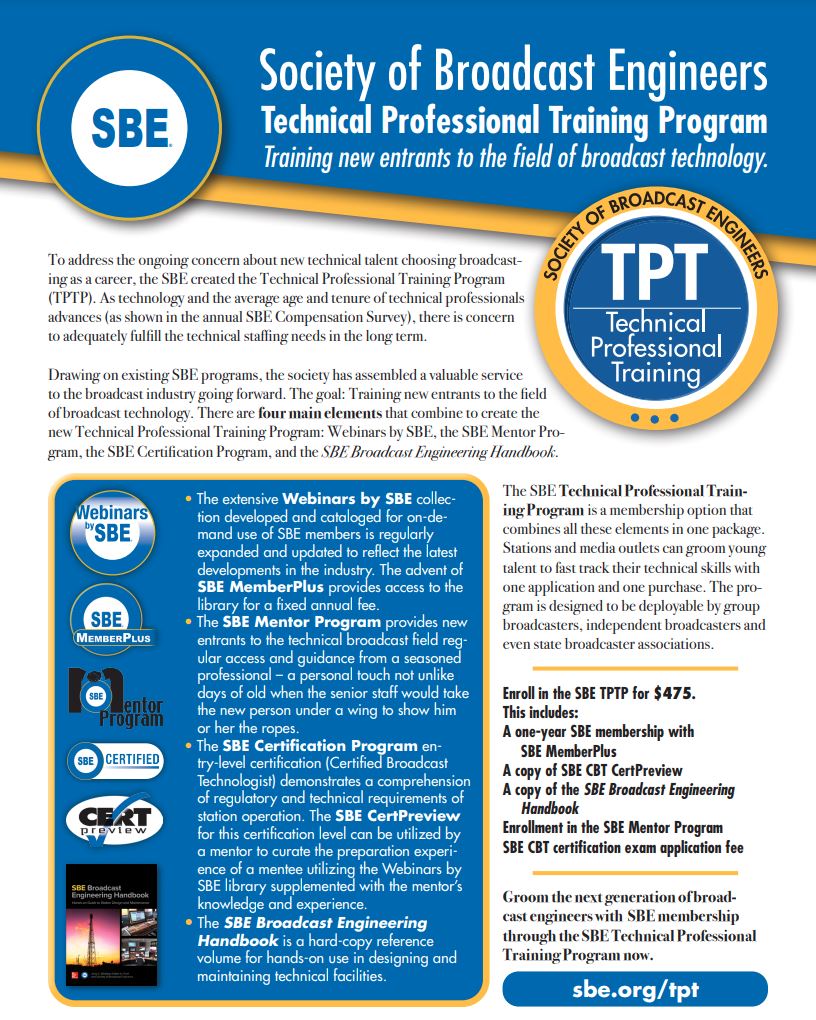 The SBE Technical Professional Training Program is a membership option that includes all the elements listed above in one package. Stations and media outlets can groom young talent to fast track their technical skills with one application and one purchase. The cost of the SBE TPTP is $475. This includes a one-year SBE membership with SBE MemberPlus, a copy of SBE CBT CertPreview, a copy of the SBE Broadcast Engineering Handbook, enrollment in the SBE Mentor Program, and the SBE CBT certification exam application fee to be taken later.
The SBE Technical Professional Training Program is a membership option that includes all the elements listed above in one package. Stations and media outlets can groom young talent to fast track their technical skills with one application and one purchase. The cost of the SBE TPTP is $475. This includes a one-year SBE membership with SBE MemberPlus, a copy of SBE CBT CertPreview, a copy of the SBE Broadcast Engineering Handbook, enrollment in the SBE Mentor Program, and the SBE CBT certification exam application fee to be taken later.
A one-page information sheet is available for download or to share.
The program is designed to be deployable by group broadcasters, independent broadcasters and even state broadcaster associations. Ideally, the mentor would come from within the ranks of the organization in which the mentee is employed, but the mentor role can be filled by any qualified engineer willing to invest the time. The SBE will assist in arranging a mentor for the TPTP applicant.
Apply for SBE membership through the SBE Technical Professional Training Program now.
PDF APPLICATION ONLINE APPLICATION
May Live Webinars
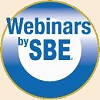
Cybersecurity - Principles and Concepts
May 20, 2021, 1 PM CT
The 2021 IP Networking series continues with Module 5: Cybersecurity - Principles and Concepts on Thursday, May 20, 2021. Part 5 of the series will focus on understanding the principles and concepts of cybersecurity. Topics to be covered include: Understanding the NIST framework; practical NIST framework implementation; cybersecurity risks, threats, and vulnerabilities. Cybersecurity principles will be discussed including minimum attack surface, least privilege, defense-in-depth, and deny-by-default. Other topics covered include the security audit, security policies and understanding cybersecurity threats: DoS, DDoS, and Malware. Mitigating cybersecurity threats is also covered.
About Your Instructor
Wayne Pecena, CPBE, 8-VSB, AMD, ATSC3, DRB, CBNE
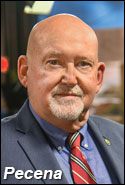
Wayne M. Pecena is the Associate Director of Educational Broadcast Services at Texas A&M University. Wayne has over 48 years of broadcast and IP network engineering experience and holds BS and MS degrees from Texas A&M University. Wayne is a Fellow of the Society of Broadcast Engineers (SBE) and holds the Certified Professional Broadcast Engineer (CPBE) and Certified Broadcast Network Engineer (CBNE) certifications from the SBE. He currently serves in his second term as the national President of the SBE. He was named the 2012 SBE Educator of the Year, the 2014 Radio World Engineer of the year, and named an IEEE-BTS Distinguished Lecturer in 2018. He is a frequent industry speaker on IP Networking and cybersecurity topics for the broadcast and media technology professional.
SBE Recertification Credit
The completion of a Webinar from Webinars by SBE qualifies for 1 credit, identified under Category I of the Recertification Schedule for SBE Certifications.
Registration and Pricing
SBE Members: $62
MemberPlus Members FREE
Non-Members: $92
Register Here

ANSI/TIA-222-H Standard & Broadcast Tower Maintenance
May 27, 2021, 1 PM CT
The objective of this session is to introduce the maintenance requirements for broadcast towers per ANSI/TIA-222, revision H, Structural Standard for Antenna Supporting Structures, Antennas, and Small Wind Turbine Support Structures, the recognized design standard for tower structures and antennas.
About Your Instructor
Brian Reese, President, Reese Tower Services
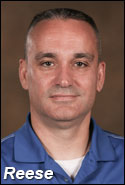
Brian Reese, president of Reese Tower Services brings more than 25 years of experience to the tower industry and was the chair of the TIA-222 tower standard committee from 2006 to 2012. He is the current chair of the American Society of Civil Engineer's Design of Steel Lighting System Support Pole Structures (ASCE 72) committee. Reese has experience in tower manufacturing, modifications to tower structures, mapping and condition assessments, and weld inspections including non-destructive examination techniques. He is a registered PE and a certified weld inspector.
SBE Recertification Credit
The completion of a Webinar from Webinars by SBE qualifies for 1 credit, identified under Category I of the Recertification Schedule for SBE Certifications.
Registration and Pricing
This webinar will be approximately 90 minutes long.
SBE Members: $62
MemberPlus Members FREE
Non-Members: $92
Register Here
Questions?
If you have questions regarding this course, contact Cathy Orosz via email or by phone at 317-846-9000.
More information about registering using the SBE MemberPlus benefit
All SBE webinars are included at no additional cost for members who renew or join using the $175 SBE Member Plus membership option. Through this option you get access to all SBE webinars for no extra cost. Members can renew and newcomers may join online at the SBE website using the SBE MemberPlus option.
Access to the SBE webinars through the SBE MemberPlus program is limited to the MemberPlus-purchaser only. You are not permitted to distribute, sell, copy, share, project or otherwise make the webinars available to any other individual or group without express written permission by the SBE.
Several state-of-the-art radio, TV, multimedia, and IT engineering training is available through this page...
http://sbe.org/education/webinars-by-sbe/on-demand-webinars/
More information on SBE Education Programs is available here...
http://www.sbe.org/education/
Views expressed herein do not necessarily reflect the official position of the Society of Broadcast Engineers (SBE), its officers, or its members. SBE Chapter 24, Inc. regrets, but is not liable for, any omissions or errors. Articles of interest to Chapter 24 members are accepted up to the close of business the 1st day of each month. Send your article to lcharles@sbe.org.
|
 To address the ongoing concern about new technical talent choosing broadcasting as a career, the SBE created the Technical Professional Training Program (TPTP). As technology and the average age and tenure of technical professionals advances (as shown in the annual SBE Compensation Survey), there is concern to adequately fulfill the technical staffing needs in the long term.
To address the ongoing concern about new technical talent choosing broadcasting as a career, the SBE created the Technical Professional Training Program (TPTP). As technology and the average age and tenure of technical professionals advances (as shown in the annual SBE Compensation Survey), there is concern to adequately fulfill the technical staffing needs in the long term.
 The SBE Technical Professional Training Program is a membership option that includes all the elements listed above in one package. Stations and media outlets can groom young talent to fast track their technical skills with one application and one purchase. The cost of the SBE TPTP is $475. This includes a one-year SBE membership with SBE MemberPlus, a copy of SBE CBT CertPreview, a copy of the SBE Broadcast Engineering Handbook, enrollment in the SBE Mentor Program, and the SBE CBT certification exam application fee to be taken later.
The SBE Technical Professional Training Program is a membership option that includes all the elements listed above in one package. Stations and media outlets can groom young talent to fast track their technical skills with one application and one purchase. The cost of the SBE TPTP is $475. This includes a one-year SBE membership with SBE MemberPlus, a copy of SBE CBT CertPreview, a copy of the SBE Broadcast Engineering Handbook, enrollment in the SBE Mentor Program, and the SBE CBT certification exam application fee to be taken later.










